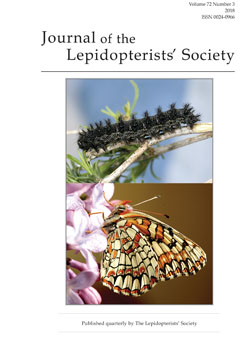Papilio hectorides larvae reared on Piper xylosteoides mostly followed a usual five-instar larval stage, but one third of the individuals underwent a supernumerary molt — the majority of which were male. The smaller size of the second instar indicated that a larva would experience a supernumerary molt. Along their development, larvae that underwent six instars showed smaller increments in head capsule size and body mass at each molt than those that experienced five instars. Nonetheless, six-instar larvae were larger at the onset of the penultimate instar, and also produced larger pupae than five-instar larvae. Adding a sixth instar predictably increased the time spent in the larval stage. A previous study showed that P. xylosteoides is a low quality larval host for P. hectorides compared to three other native plants. As larvae that underwent supernumerary molts produced large pupae, plasticity in instar number seems to allow them to compensate for lower quality food.
How to translate text using browser tools
1 August 2018
Supernumerary Larval Molts Are Male-Biased and Lead to Larger Pupae Size in Papilio hectorides (Papilionidae)
Carla M. Penz,
Reinaldo Luiz Corrêa Bueno
ACCESS THE FULL ARTICLE
It is not available for individual sale.
This article is only available to subscribers.
It is not available for individual sale.
It is not available for individual sale.
early stages
head capsule
instar
larval development
Papilio





